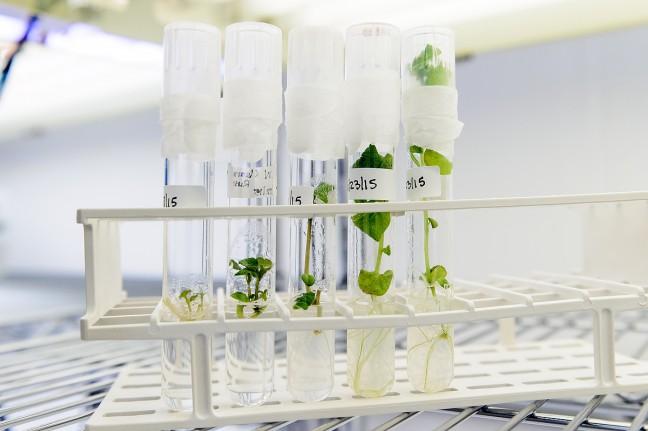Though the word “Biotron” might sound more like a Transformer than a laboratory, the research that takes place there is anything but science fiction.
While the UW lab itself is no work of fiction, it does help scientists turn their wildest ideas into reality. The Biotron lab is able to recreate any terrestrial environment on earth, allowing researchers to conduct more versatile experiments on campus than anywhere else in the country. Located on Observatory Drive, it is one of only four research facilities in the world that provide precise simulated environments for plant, animal, material and product testing.
The power of light in Biotron’s controlled environment rooms can reach half the power of the sun and researchers can lower or elevate carbon dioxide levels. Room temperatures can range from minus 5 to 110 degrees Fahrenheit and humidity can range from 10 to 90 percent, according to the Biotron website.
Hannah Carey, Biotron director, said the rooms are carefully monitored to ensure accurate results for experiments. Carey is one of many researchers who has conducted groundbreaking research at the Biotron since it was built in the 1960s.
A control panel and staff closely monitor each room’s conditions, Carey said. Staff members carry pagers with them after hours should a room deviate at all from its set simulation, and rooms are equipped with multiple alarms that detect those changes.
“As a researcher, I don’t have to be on top of it all the time because we have this excellent staff and monitoring system,” Carey said.
The Biotron is the first place on earth where LED lights were used to grow plants, Bjorn Karlsson, Biotron’s greenhouse manager, said. In addition, the Biotron lab has conducted numerous space projects that have examined plant responses to microgravity. Because of this research, NASA astronauts at the International Space Station were able to produce food in space for the first time, he said.
Back on Earth, the Biotron is a major hub for potato research. Wisconsin is ranked third in the nation for potato production and 5 percent of the potatoes grown in the U.S. every year can be traced back to Biotron.
Due to the recent rise of year-round temperatures, knowing how potatoes respond to heat stress has become increasingly important to the industry.
Currently at the lab, Paul Bethke and Jim Busse, professors from the department of horticulture, are studying how heat stress causes defects in potatoes and lowers their value. Another researcher from the horticulture department, Jiwan Palta, is studying how plants from a variety of genetic backgrounds might adapt differently to higher temperatures.
Though mostly plant and animal research occupy the Biotron lab, commercial clients also use the rooms to test how products withstand extreme conditions. Harley-Davidson, for example, tested gas tanks for durability under high light and temperature, according to the Biotron media packet.
Recently, Biotron has been in the spotlight due to a multi-year renovation, which was completed last year. But most of the upgrades cannot be seen because they took place behind the walls.
“The [purpose] was to optimize energy efficiency so that we can continue to have desert environments right next to arctic environments without consuming huge amounts of energy,” Isabelle Girard, associate director of Biotron, said.
Karlsson said the lab’s work in expanding technology will become even more important in the future.
“I see the future of the Biotron as becoming increasingly important because the world is becoming more urbanized. By 2050, 75 percent of the world’s population will be urban,” Karlsson said. “This will push people to create and grow food in urban areas — in controlled environments. The Biotron can provide a very strong research platform from which to expand those technologies.”













